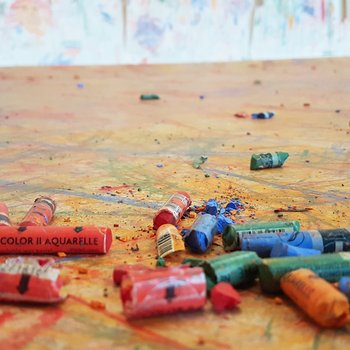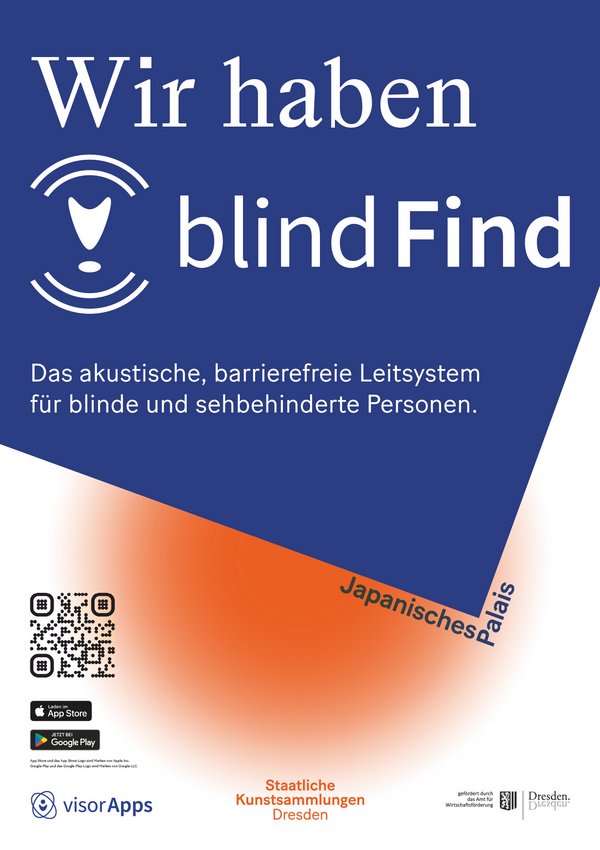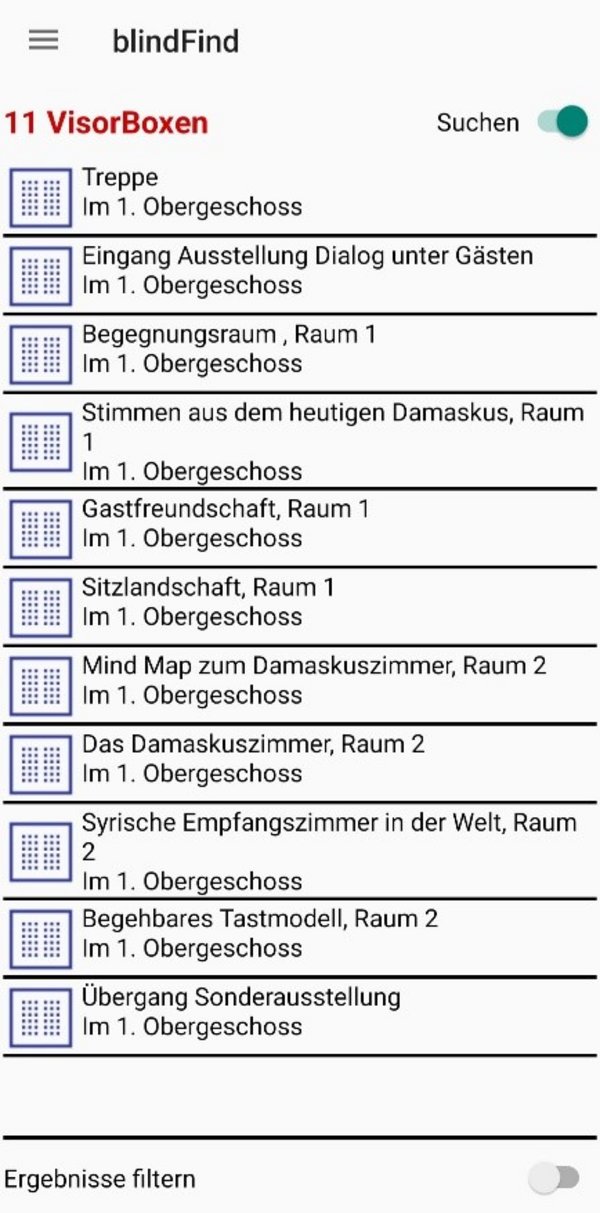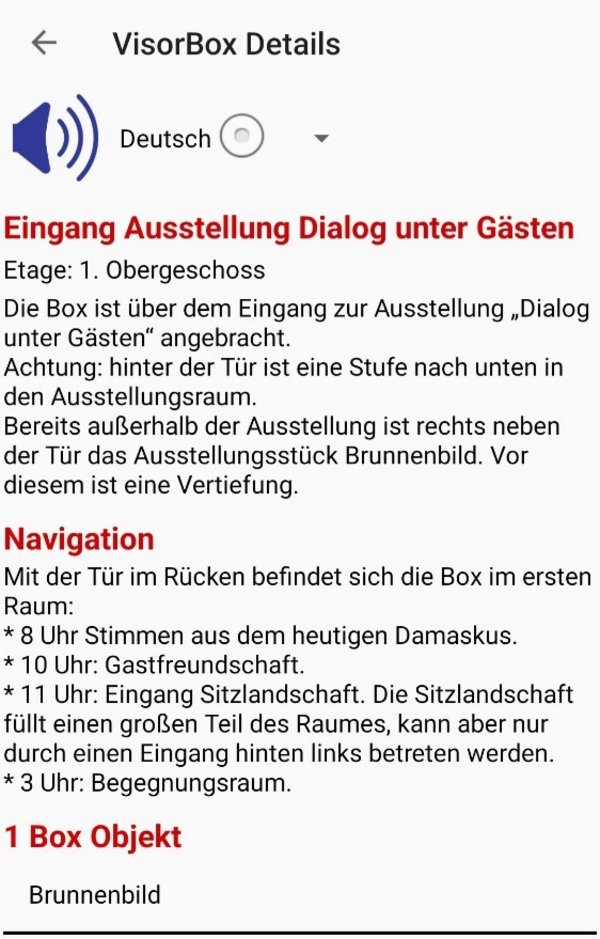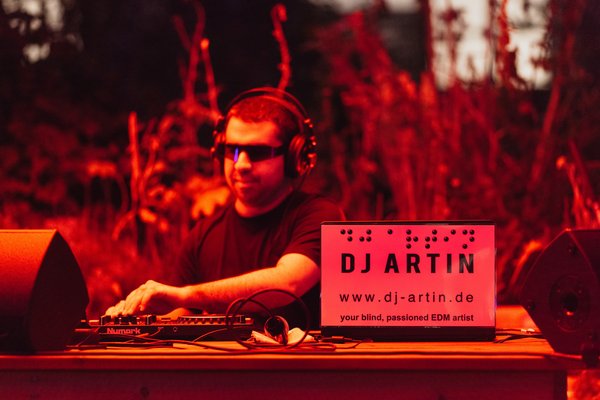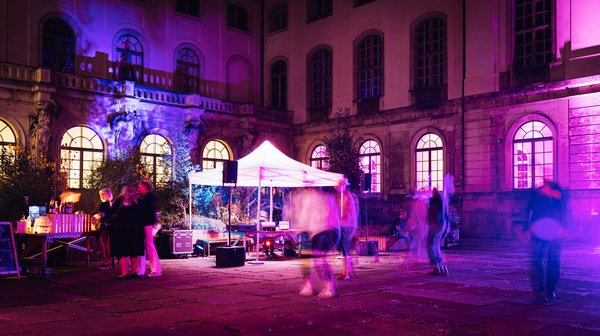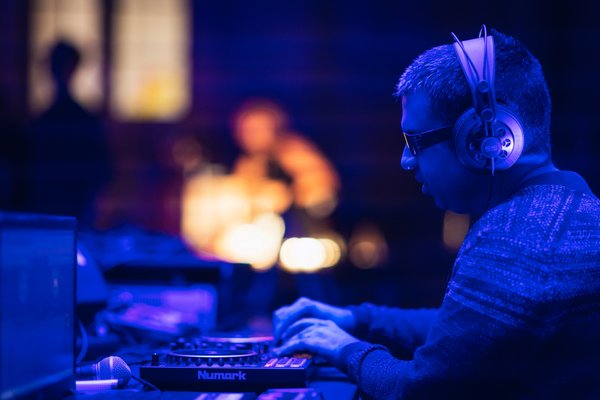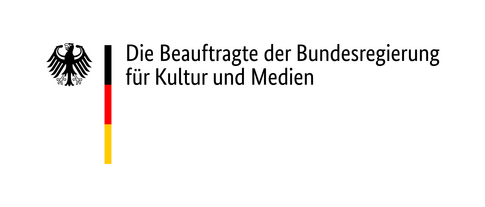By making it easier to access our cultural heritage, the Japanisches Palais (Japanese Palace) is helping to promote democracy. Barrier-free access fosters diversity by promoting a variety of perspectives and experiences and sensitising people to a wide range of topics. Museums, as the guardians of knowledge and history, but also as modern meeting places, play an important role in our society. Consequently, they need to reflect on how they look and how they will be designed in future, a commitment we actively pursue here at the Japanisches Palais.
Unrestricted participation in the “museum usui publico patens” (museum open for public use), changing perspectives and open encounters - these are the guiding principles we try to live by each and every day at the Japanisches Palais. It is a challenging task and will continue to be one in the future too. It is a process which needs continuous critical reflection and open-mindedness on our part, and a constant active dialogue with our guests. Our museum offers our visitors a space for unconditional, transcultural hospitality with programmes brought to life by the diverse cultural backgrounds of our guests and employees.
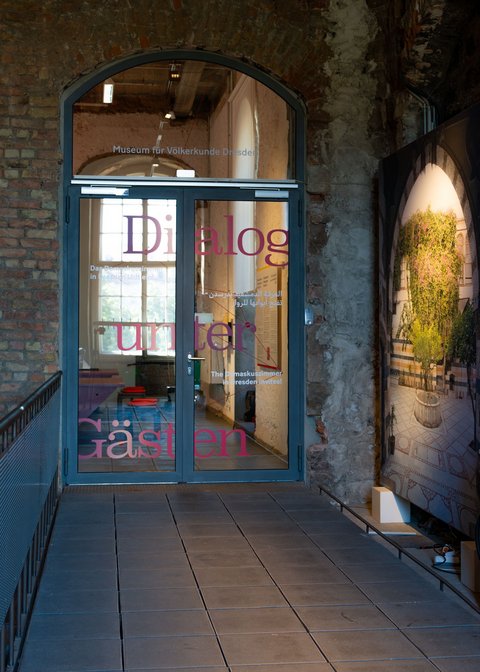
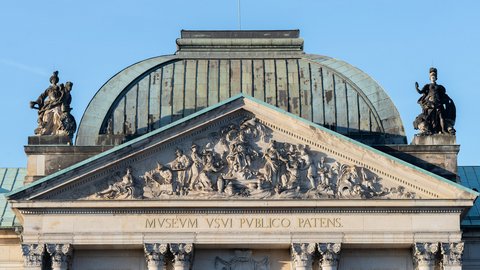
"MUSEUM USUI PUBLICO PATENS" - Das Japanische Palais
© Staatliche Kunstsammlungen Dresden, Foto: Jacob Franke
"Museum usui publico patens" also means that our exhibitions and programmes should be open to everyone. In the day-to-day workings of a museum, however, this maxim is often not lived to the fullest. We certainly don't want to gloss over the fact that there are still also a number of places in the Japanisches Palais where this could be improved. However, we are pleased that there is a team at work here that is using targeted event formats and campaigns to welcome our visitors with as few barriers as possible.
Working together with people who have disabilities, we have developed and continue to develop various measures in the accompanying and educational programmes at the Japanisches Palais. I would like to introduce you to some of these projects in more detail.
blindFind - The barrier-free guidance system for blind and visually impaired people
Since the beginning of 2023, blindFind, an acoustic and barrier-free guidance system from visorApps, has been guiding blind and visually impaired visitors through the ground floor, the inner courtyard and the permanent exhibition “Dialogue among guests – The Damaskuszimmer in Dresden invites!” on the first floor.
The Bluetooth-based guidance system consists of the blindFind app for iPhone, Apple Watch and Android as well as so-called blindFind boxes which provide acoustic information. The app is available free of charge in the App Store and Play Store and displays locations or objects in the area that are equipped with a blindFind box. The boxes also transmit information about the places and objects to the mobile device via Bluetooth. With a simple click on the app, the loudspeaker of the respective box emits a clacking sound, similar to the acoustic signals at traffic lights, that directs the person to the box, followed by a short text. For example, if a box is located above the door to the inner courtyard, it would, after the clacking sound, say “Entrance to the inner courtyard”. This makes it possible for visitors to find their way around the room and to locate the box even if they are not right in front of it. The app also contains navigation instructions on what else can be found in the surrounding area and where exactly to find it. Often there is also more detailed information on the objects and locations. For example, the boxes in the Palais Café explain the philosophy and history behind the café.
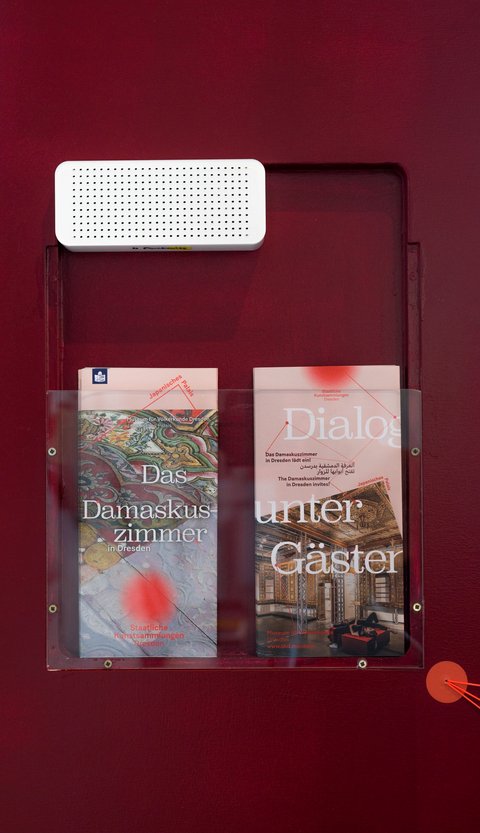
Blindfind-Box und Flyer in einfacher Sprache an einem der roten Einbauten in der Ausstellung des Damaskuszimmers ("Dialog unter Gästen") im Japanischen Palais
© Staatliche Kunstsammlungen Dresden, Foto: Jacob Franke
In the permanent exhibition, the guidance system is linked to the multimedia guide, which has been enhanced with corresponding audio descriptions. In this way, blindFind can also provide audio versions of all exhibition texts.
Barrier-free lockers with Braille and relief script
In addition to our existing lockers, a new locker module with over 45 lockers was created in 2021, equipped with tactile signs in Braille and with relief script as well as a high-contrast font. The lockers are located on the ground floor and are also accessible for wheelchair users.
Tactile floor guidance system in the "Dialogue among guests" exhibition
In some areas of the "Dialogue among Guests" exhibition, the Japanisches Palais has put in a tactile floor guidance system. It consists of individual studs which improve the orientation of blind and visually impaired visitors.
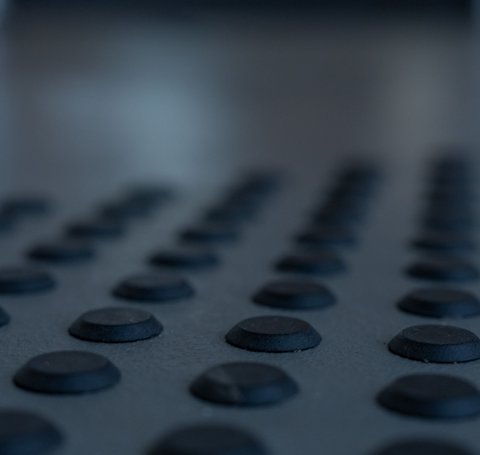
Flyer in plain language
Flyers in plain language are available for visitors to the permanent exhibition "Dialogue among guests – The Damaskuszimmer in Dresden invites!" on the 1st floor. The flyers tell the story of the history, restoration and reconstruction of the Damascus Room.
Talking garden
The talking garden is an audio guide with short stories about the colourful world of the Palais garden which extends over several raised beds in the inner courtyard of the Palais. There are stories about how earthworms dance in the compost, about the other valuable guests that visit the garden besides just us humans or about the things that inhabitants, such as dog rose, marigold and nettle, experience. The stories can be accessed through videos collected in a YouTube playlist. You can listen in right here or look for the QR codes to individual stories in our raised beds.
Tactile 3D model of the Japanisches Palais
During the course of 2023, a tactile 3D-printed model of the Japanese Palace building was created. Along with the model there are German and English descriptions of the model and the building's architecture, available both as audio and in print, as well as a plain language version. To make this model, a drone was used to scan the building and that data was then used to generate a 3D file. The final model, along with the labelling and audio description, was produced in collaboration with ink.werk, the network for unrestricted access to culture.
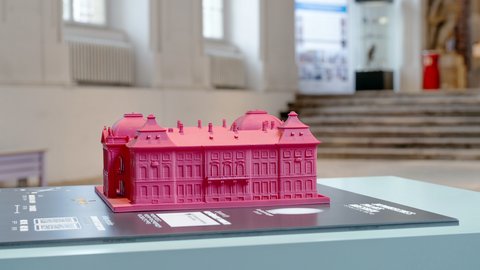
Das Tastmodell des Japanischen Palais im Eingangsbereich
© Staatliche Kunstsammlungen Dresden, Foto: Jacob Franke
In addition to the tactile experience, visitors also get great insights into the architecture. Did you know, for example, that Augustus the Strong remodelled the palace so that it would represent his power? Or that the Japanisches Palais uses stylistic elements taken from royal palaces in Europe as well as East Asian structures? And indeed, the architectural history of the building provides fascinating insights into Augustus’ aspirations. While he was eagerly collecting East Asian porcelain, Meissen was developing its own porcelain production, which Augustus subsequently strongly promoted. Initially, East Asian porcelain was simply copied. When these copies found their way to France, however, even experts could barely distinguish them from the original. It was a triumph, and it prompted Augustus to elevate Meissen porcelain above East Asian porcelain, and thereby elevate his own status. Through the architecture, Augustus tells us this story even before you enter the building. Of course, the story is based solely on Augustus’ claims and wishes, without him ever having gotten a reaction from anyone in Eastern Asian. The next time you visit, take a look at the sandstone used in the façade and floor, which is sometimes unprocessed, sometimes polished and sometimes plastered. The 24 Japanese herms in the inner courtyard - stereotypical representations of how Europeans perceived East Asian men at the time - are particularly striking. You can hear some interesting facts about them in the audio description.
The tactile model is available to use free of charge in the foyer of the Japanisches Palais. The audio description can be accessed via the QR codes on the model or via the Japanisches Palais website.

Das Tastmodell des Japanischen Palais im Eingangsbereich
© Staatliche Kunstsammlungen Dresden, Foto: Jacob Franke
An afternoon of storytelling in German and German sign language with a sign language interpreter in the “Dialog unter Gästen” exhibition
“Stories of elephants” told in German and German sign language with Kathleen Rappolt and Jan Sell. The moderator is Naemi Schmidt-Lauber and the sign language interpreter is Monika Möhrer.
Artists Kathleen Rappolt and Jan Sell talk about the strength and characteristics of elephants. Loosely based on a fairy tale from India and one from West Africa, they talk about what strength is, how it expresses itself and what mice, elephants and humans have to do with it. Born in Dresden, Jan Sell was already telling bedtime stories to other children as a pupil at a boarding school for the deaf. Today, he performs on major stages, works on theatre productions and currently works as a performer, editor and operator in the media department of ZfK e.V. Childhood and drama educator Kathleen Rappolt is a freelance storyteller, drama educator and lecturer. She is involved in numerous theatres, storytelling festivals and educational institutions. As part of our storytelling afternoons, you can experience the traditional Syrian art of storytelling together with a warm cup of tea. Throughout the year, you can listen to a wide variety of stories on Sunday afternoons.
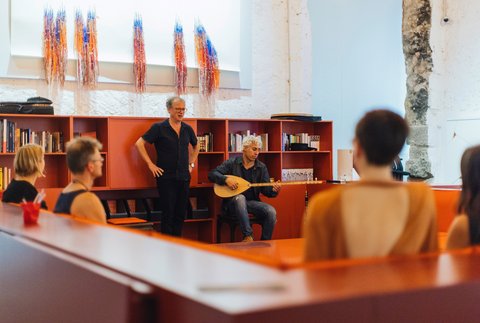
Zwei Erzählkünstler bei der MUPP-Art-Night im Begegnungsraum der Damaskuszimmer-Ausstellung
© Staatliche Kunstsammlungen Dresden, Foto: Oliver Killig
MUPP Art Night
During the summer, under the motto “Museum Usui Publico Patens”, the MUPP Art Night takes place every third Thursday. Local DJs transform the Palais into a dance floor and the mobile workshops open their doors. The mobile workshops are creative places in the Japanisches Palais where our guests can turn their own artistic ideas into reality and enjoy a very personal interaction with the art world. Currently we have the Fair Fashion Factory, our sewing workshop, and the Media Lab to let people creatively explore new technologies such as 3D printers and laser cutters. And there is the Environmental Library, which provides access to a considerable collection of knowledge on all aspects of the environment. The current exhibitions can also be viewed during the evening hours. The Palais Café turns into a cocktail bar and the Palais Garden becomes a place to socialise and meet in the balmy evening hours.
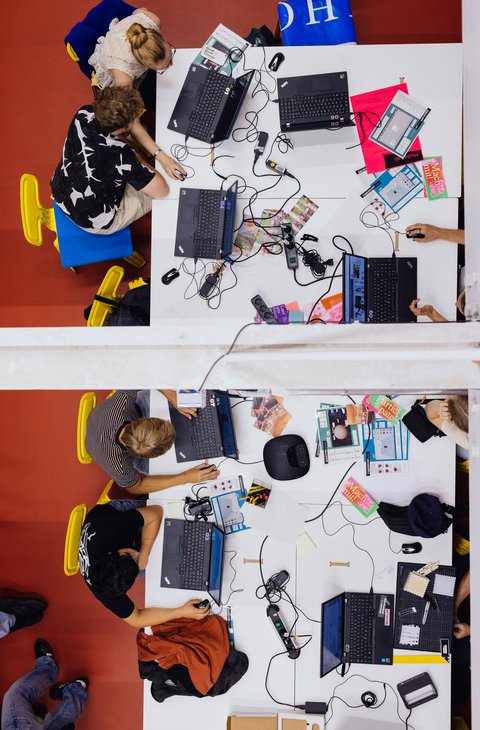
Arbeiten im MediaLab des Japanischen Palais
© Staatliche Kunstsammlungen Dresden, Foto: Oliver Killig
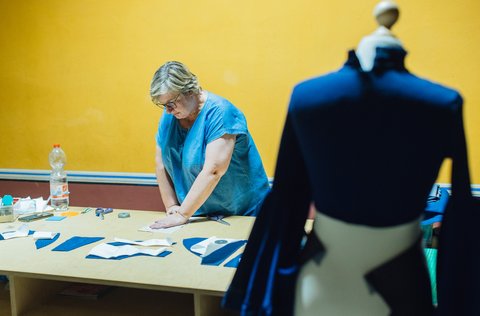
Schneidermeisterin Katrin Havekost in der Nähwerkstatt im Japanischen Palais
© Staatliche Kunstsammlungen Dresden, Foto: Oliver Killig
Based on our experiences with previous MUPP Art Nights, we are planning for our parties in 2024 to be barrier free, making it easier to include people with disabilities. We have been in touch with the Landesverband Soziokultur Sachsen e.V., and others, but also with our own experts, to obtain advice. In addition to adapting our venue, announcements and advertising, we would also like to focus on a diverse range of events as part of a successful party.
Tactile walk-in model of the Damascus Room
The Damascus Room, which is at the heart of the “Dialogue among Guests” exhibition, is to be experienced in a new way. The aim is to create a model that allows the viewer to feel the colourful and ornamental complexity of the panelling with its urban landscapes, bouquets of flowers, fruit bowls and Arabic inscriptions. The fine reliefs are heightened to make them easier to perceive and the original colouring is enhanced with high-contrast off-colours. Supported by detailed audio descriptions, the tactile model promises to make the rich ornamentation of the Damascus Room perceptible to all the senses.
It reproduces the Damascus Room on a scale of 1:3. By entering the small room and closing the sliding door, the entire composition of the reception room's panelling can be taken in. The colours indicate elements that have similar or identical decors. More detailed information can be listened to using the reading pen. Recurring elements with the same content play a recognisable melody with a different musical instrument in each case. The model also includes a relief plate that reproduces a detailed section of a panel with flower vines, a wood-turned section of the window lattice and 3D-printed ceiling decorations.
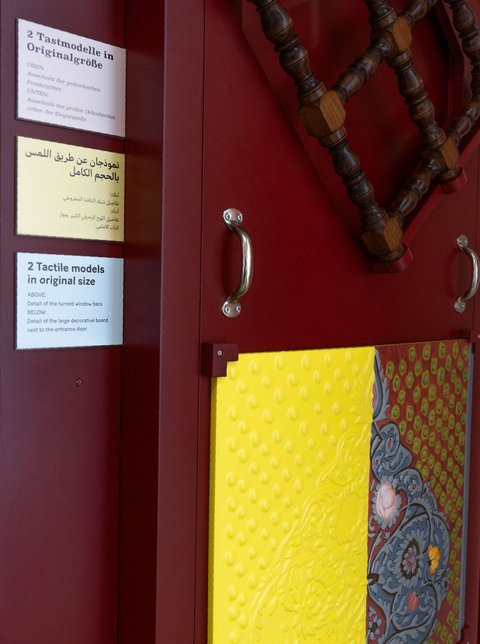
This is a pilot project, the realisation of which is being tested step by step. The tactile model was initially accessible as a user test from 21 September 2023 until the end of the year. During this time, we collected feedback from our guests which we will use to optimise the final product, ultimately making the Damascus Room as accessible as possible.
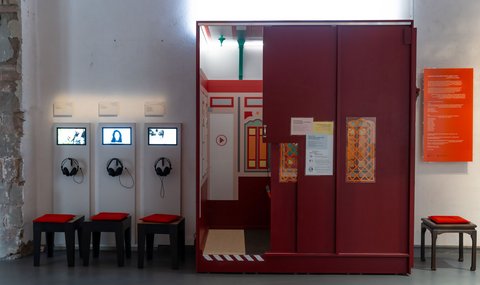
We must openly admit that in our endeavours to make the Japanese Palace an inclusive and accessible place, we are still a long way from where we want to be. In many respects, we have not yet reached the minimum standard for enabling unrestricted participation in the art museum. We lack a lift, wheelchair-accessible toilets and traffic lights for a safe crossing to our entrance. We also lack sufficient railings and seating on the many stairs and the uneven sandstone slabs on the floor also cause difficulties.
In addition to the structural measures, the character of the building also offers scope for improvement. Our building serves as a special exhibition space and we regularly have rapidly changing special exhibitions, but no standardised concept for barrier-free access. As a result, barrier-free standards are not always satisfactorily incorporated into the exhibition layouts. In addition to the barrier-free presentation of the exhibits, this affects, for example, the choice of language in exhibition texts, visual and acoustic stimuli in the exhibition rooms, the provision of hands-on objects, but also the structure of our website and the type of advertising.
Our team is trying to expand access to our artworks through by setting up tours for sign language users, for the blind and for people with visual impairments as well as tours conducted in simple language. However, this is not yet standard across all exhibitions. In recent years, we have been able to create a number of offers for blind people and people with visual impairments. Our aim for the coming years is to also address other groups. In addition to complying with accessibility standards, it is also important to choose exhibition themes that actively incorporate the experiences of people with disabilities.
Despite our efforts to tackle these challenges and remove barriers, we have to admit that we are not yet consistent enough and that this restricts unrestricted participation in the cultural heritage and diverse programme of the Japanisches Palais. We are aware that accessibility requires not only a physical but also a conceptual commitment. The path to an accessible museum requires continuous reflection as well as active dialogue with our guests, colleagues, and above all, experts with personal experience. At the Japanisches Palais, we want to and will engage in this dialogue at all times.
Also of interest:
If you happened to sit under the hop-draped pergola in the garden of the Japanisches Palais in May or June, you may well have been surprised by how sticky the leaves were. If you looked more closely, you will have spotted hundreds of minute black insects clinging to the plant stems or the undersides of the leaves: aphids.
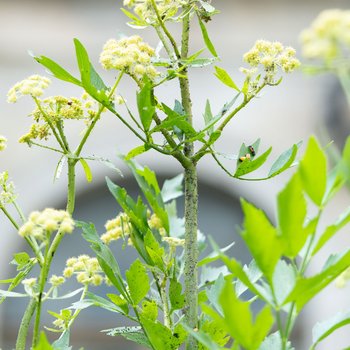
They say that bad weeds grow tall. Where building projects have failed to do so, weeds often grow tall instead, bearing witness to the stranding of earlier ambitions. But how should we deal with such spaces in the city? What should we do with the craters left behind by failed building plans? A collective of creatives in Ljubljana finds answers.
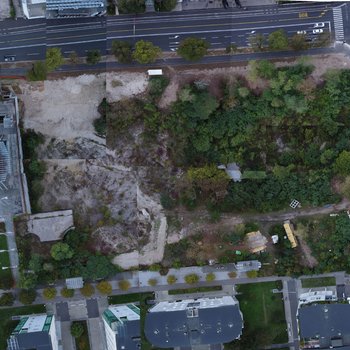
What happens when you give museum audiences a stack of pencils, a few sheets of paper, and an entire room lined with white paper? Dresden artist Artourette did just that as a part of the Children's Biennale at the Japanisches Palais.
